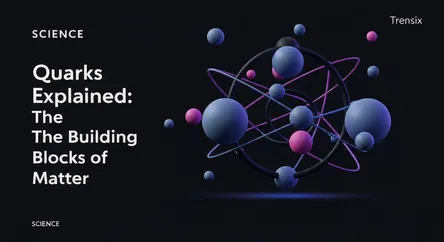Science
Quarks Explained: The Building Blocks of Matter

Discover quarks, the fundamental particles that form protons and neutrons, and learn why they are key to understanding the universe.
What is it?
A quark is an elementary particle and a fundamental building block of all commonly observable matter. Quarks combine to form composite particles called hadrons, the most stable of which are protons and neutrons—the components of atomic nuclei. There are six types, or "flavors," of quarks: up, down, strange, charm, bottom, and top. Protons are made of two up quarks and one down quark, while neutrons contain one up and two down quarks. A peculiar feature called "color confinement" means quarks are never found in isolation; they are always bound together within hadrons. They are the only fundamental particles to experience all four fundamental forces.
Why is it trending?
Quark research is at the forefront of particle physics. Scientists at facilities like CERN's Large Hadron Collider smash particles together at near light speed to study quarks and the forces that bind them. These experiments can recreate conditions from just after the Big Bang, forming a "quark-gluon plasma" that helps us understand the early universe. Recently, researchers have measured quantum entanglement between top quarks for the first time, pushing the boundaries of quantum mechanics. This ongoing work tests the limits of the Standard Model and searches for new physics.
How does it affect people?
Directly, quarks have no noticeable effect on everyday life because they are confined within protons and neutrons. However, everything you see and touch—including your own body—is made of atoms, which are built from quark-based particles. Understanding these fundamental constituents is crucial for advancing human knowledge. The pursuit of studying quarks drives technological innovation, from the supercomputers used for simulations to the advanced detectors in particle accelerators. While you don't interact with a single quark, this research fundamentally deepens our understanding of existence and could fuel future technologies.